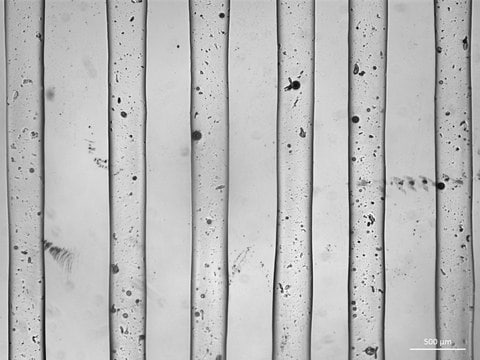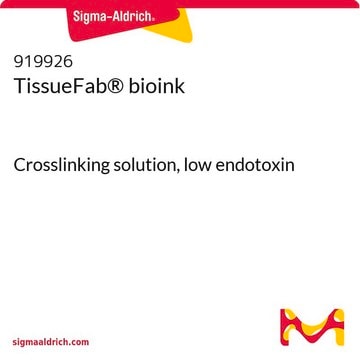906913
TissueFab® bioink
Alg(Gel)ma -Vis/525 nm
Sinónimos:
Alginate, Bioink, GelMA-Alginate bioink, Gelatin methacrylamide, Gelatin methacrylate, Gelatin methacryloyl, Sodium alginate
About This Item
Productos recomendados
description
suitable for 3D bioprinting applications
form
gel form (Viscous)
impurities
≤5 CFU/g Bioburden (Fungal)
≤5 CFU/g Bioburden (Total Aerobic)
color
colorless to pale yellow
pH
6.5-7.5
application(s)
3D bioprinting
storage temp.
2-8°C
¿Está buscando productos similares? Visita Guía de comparación de productos
General description
Application
Packaging
Legal Information
signalword
Warning
hcodes
Hazard Classifications
Skin Sens. 1 - STOT RE 2
target_organs
Liver,Upper respiratory tract
Storage Class
10 - Combustible liquids
wgk_germany
WGK 3
flash_point_f
Not applicable
flash_point_c
Not applicable
Certificados de análisis (COA)
Busque Certificados de análisis (COA) introduciendo el número de lote del producto. Los números de lote se encuentran en la etiqueta del producto después de las palabras «Lot» o «Batch»
¿Ya tiene este producto?
Encuentre la documentación para los productos que ha comprado recientemente en la Biblioteca de documentos.
Los clientes también vieron
Artículos
Bioinks enable 3D bioprinting of tissue constructs for drug screening and transplantation; select suitable bioinks for specific tissue engineering.
Learn how 3D bioprinting is revolutionizing drug discovery with highly-controllable cell co-culture, printable biomaterials, and its potential to simulate tissues and organs. This review paper also compares 3D bioprinting to other advanced biomimetic techniques such as organoids and organ chips.
Protocolos
Frequently asked questions (FAQs) for KAPA SYBR® FAST One-Step qRT-PCR Kits.
Nuestro equipo de científicos tiene experiencia en todas las áreas de investigación: Ciencias de la vida, Ciencia de los materiales, Síntesis química, Cromatografía, Analítica y muchas otras.
Póngase en contacto con el Servicio técnico












